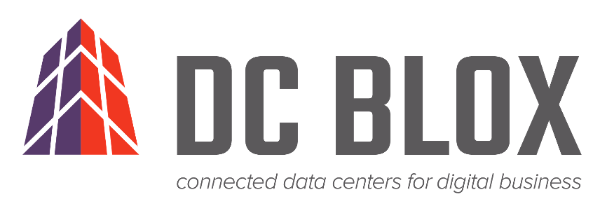
DC BLOX started in 2014 in Atlanta, Georgia, with the initial focus of building data centers in growing cities like Birmingham and Huntsville, Alabama; Greenville, South Carolina; and Chattanooga, Tennessee. The goal was to bring digital infrastructure to places that had been overlooked by the major data center companies. Then DC BLOX connected the data center dots, building a regional fiber network to connect them.
“The leaders in our company come from the tech or telecom industry, and they know how important connectivity is for bringing data outside the data center,” said Thomson.
Building a “Digital Hub of Epic Proportions”

To carry data to and from all points around the globe, DC BLOX built its own cable landing station in Myrtle Beach, South Carolina. Now, for the first time, the Southeast has global connectivity and can relish in the resulting economic benefits.
It didn’t end with a siloed cable landing station, explains Thomson. DC BLOX built a dark fiber route from Myrtle Beach across South Carolina and Georgia into the Atlanta communications hub. DC BLOX’s dark fiber route serves as a backbone across the region, which hadn’t had connectivity before. It can now be used by hyperscale companies seeking to grow their Southeast presence.
“One of our hyperscale tenants has said they truly believe that we’re going to see Myrtle Beach grow into an ‘digital hub of epic proportions.’ We agree and believe that growth will follow as global traffic flows through and is dispersed elsewhere,” Melissa Reali-Elliott, Content Marketing Manager at DC BLOX, told Inside Towers.
DC BLOX is acquiring land and beginning the design and development phase for hyperscale-ready facilities, two in the Atlanta area, and one near Charleston, SC that they will connect via DC BLOX’s dark fiber backbone to its cable landing station.
The Digital Transformation
The DC BLOX business plan is being driven by digital transformation, which has customers demanding data non-stop in the form of apps and information on the backside of transactions. Digital transformation represents a profound change in the marketplace, according to Thomson.
“There is a fundamental change in customer expectations and what it means to have a positive and significant customer experience,” Thomson said. “Every company is finding itself needing to provide that level of service. You either digitally transform or you die.”
DC BLOX’s trajectory is following the arc of the digital infrastructure industry, according to Reali-Elliott, and DC BLOX is building vertically integrated infrastructure to provide different tiers of support, because there are many needs for a variety of solutions, she says.
“The customers that we’re supporting are continuing to grow. And, as hyperscalers are expanding, they need providers like DC BLOX that are willing to build alongside them in line with those goals and in line with all their expanded infrastructure needs.”
Connectivity Repercussions of the Pandemic
The pandemic accelerated the digital transformation, according to Reali-Elliott, as people began to work from home and spend more of their lives online.
“Communications infrastructure was pushed away from the core cities by the pandemic and the always-on needs of society were exacerbated,” she said. “As a result, digital development needed to accelerate even faster than it was already, and it became obvious that unserved and underserved markets needed infrastructure developments rapidly.”
The pandemic created even more demand for digital infrastructure outside of the core cities. Even companies that had data centers saw a massive shift where employees stopped using their internal networks and began accessing the data over the internet. As a result, many saw the benefits of moving their digital infrastructure into a DC BLOX data center to enhance flexibility and agility.
“There was a big rush to managed service providers and IT consultants. Thankfully, the digital infrastructure industry was prepared,” Thomson said. “Ten or 15 years earlier, we might not have been ready and companies may have suffered extended downtime and losses.”
Meeting the Data Demand
As the Southeast continues to grow, the demand for digital infrastructure is increasing. DC BLOX is also growing to meet the demand.
While DC BLOX is rolling out more infrastructure, its team is constantly scanning for what they will provide next. “We have built several facilities; we already have other secured land in other areas where we’ve announced upcoming construction; and our leadership is constantly looking for new strategic investments,” Reali-Elliott said.
A big driver of growth is the abundant synergy between the data centers, dark fiber routes, and the cable landing station. The regional network connects not only data centers, but cloud providers, internet exchanges, and more than 30 carriers across the DC BLOX footprint.
DC BLOX plays an important role supporting the economy in the Southeast, ensuring existing companies, municipalities and universities have connectivity and serving as a tool to recruit other institutions to enter the market in the future.
“Digital infrastructure is a benefit to the local economies; data is arguably the lifeblood of many economies,” Thomson said. “Building this infrastructure isn’t just for us. It’s building infrastructure that benefits business and consumers broadly.
“This digital infrastructure is providing modern business services that allow companies in the region to compete globally,” Thomson added, “and underserved cities and rural areas will be positioned for their economic growth.”
For more information, please visit their website or follow their numerous growth initiatives on LinkedIn.





Reader Interactions